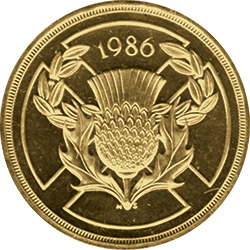Coin Info
We’ve got your Commonwealth Games 50p!
The Commonwealth Games 50p is the very latest UK commemorative coin to be released, and Change Checkers are already desperate to get their hands on one while they are circulating in their freshly struck condition.
Fear not! We can offer you a brand new Commonwealth Games 50p…as long as you’re willing to swap with us!
Here’s how it works:
- Find any commemorative 50p from your change
- Complete our online form and post a copy with your coin
- We will return your brand new uncirculated Commonwealth Games 50p within 10 days
It’s as easy as that.
You can swap up to five commemorative 50ps with us. As long as you’re happy with their quality, we’re happy to take them.
Ready? Let’s swap!
You don’t have to love football to love this £2 coin…
Have you seen this coin before? It’s the only time the UK has ever had a football themed commemorative £2 coin, but you won’t find one in your change…
As World Cup fever grips the nation once again , it reminds me of Euro ’96 when all anybody could eat, drink and breathe was football-related.
It was such a significant occasion that the Royal Mint even issued a £2 coin “in celebration of football”. Remember, this was back in the days when commemorative coins were rare, and struck mainly for collectors. Just the concept of celebrating a sporting event was unusual – the only coin to have done so prior to this was the 1986 Commonwealth Games £2.
But for such a historic event, a historic coin was needed, and this one did not disappoint.
The first of its kind…and last of its kind
The design of the 1996 £2 coin is attention-grabbing, with the distinctive pattern of a football adorning the reverse. It is also the first and only UK coin to feature a concave or bowl-shaped surface, which adds a convincing three-dimensional illusion to the design.
Significantly, this coin was also the last of its type and the following year, the bi-metallic £2 coin which is now so familiar to Change Checkers, was introduced.
You don’t need to be a coin fanatic to appreciate the appeal which a coin like this holds for a collector. Neither for that matter do you need to be a football fan to understand what a memento this is for a lover of the game. Euro’96 was the closest England have come to winning a tournament for years, and it was a time when genuine optimism in the national team was infectious rather than the subject of mockery.
Time will tell how England will fare this time around, but let’s hope they can quietly rekindle that passion which swept over the country back in 1996!
If you’re interested in coin collecting, our Change Checker web app is completely free to use and allows users to:
– Find and identify the coins in their pocket
– Collect and track the coins they have
– Swap their spare coins with other Change Checkers
Sign up today at: www.changechecker.org/app
How the Commonwealth Games started £2 Coin Collecting
In 2014 the Royal Mint struck a new circulating coin for the Glasgow Commonwealth Games. But I can still remember back to the summer of 1986…
My father worked for a bank. He came home one evening with half a dozen coins in his hands. “I bet you don’t know what these are…”, he said. “They’re the new £2 coin. They’ve been released to celebrate the Commonwealth Games.”
A new denomination for the UK
This was something genuinely new. The only “commemorative” coin in circulation was that slightly odd “hands” 50 pence that no-one really knew much about and there had only been two commemorative crowns issued in the last 20 years – both for Royal events.
This was a brand new denomination and it commemorated a proper non-royal national event that really engaged the nation. Although the 1986 Commonwealth Game coin was largely kept by collectors and never really entered mass circulation, it marked a significant change in the UK’s commemorative coin issuing strategy.
Six more single-coloured commemorative £2 coins were struck over the next 10 years before the introduction of the fully circulating £2 denomination, which has now seen 50 different designs issued.
Of course, amongst those 50 coins are four coins from 2002 – again issued to celebrate the Commonwealth Games – this time held in Manchester. At first glance, you might struggle to spot the difference between them. They all feature the same running athlete trailing a banner behind. But each has a different cameo, representing each of the four constituent parts of the United Kingdom. Find out how to tell these coins apart here >>
Officially the UK’s rarest £2 coin
They are some of the scarcest £2 coins now in circulation, with even the largest mintage (Scotland) set at just 771,750 – just 17% of the first ever commemorative bimetallic £2 coin, which was issued for the Rugby World Cup in 1999.

The 2002 Commonwealth Games £2 coins are some of the rarest ever issued. Their mintage figures are shown below each design.
But the coin you really need to be looking out for is the Northern Ireland £2. Just 485,000 coins were ever struck making it officially the UK’s rarest £2 coin.
75% disappear from circulation
Of course, the 2014 Commonwealth Games coin is a 50p, rather than the previous £2 coins. But with the Royal Mint estimating that as many as 75% of all Olympic 50ps being kept by collectors, it’s definitely worth scouring your change for.
Own the Commonwealth Games coin that started £2 collecting
This coin is no longer in circulation, but we’re giving you the chance to own the UK 1986 Commonwealth Games £2 for your collection.






